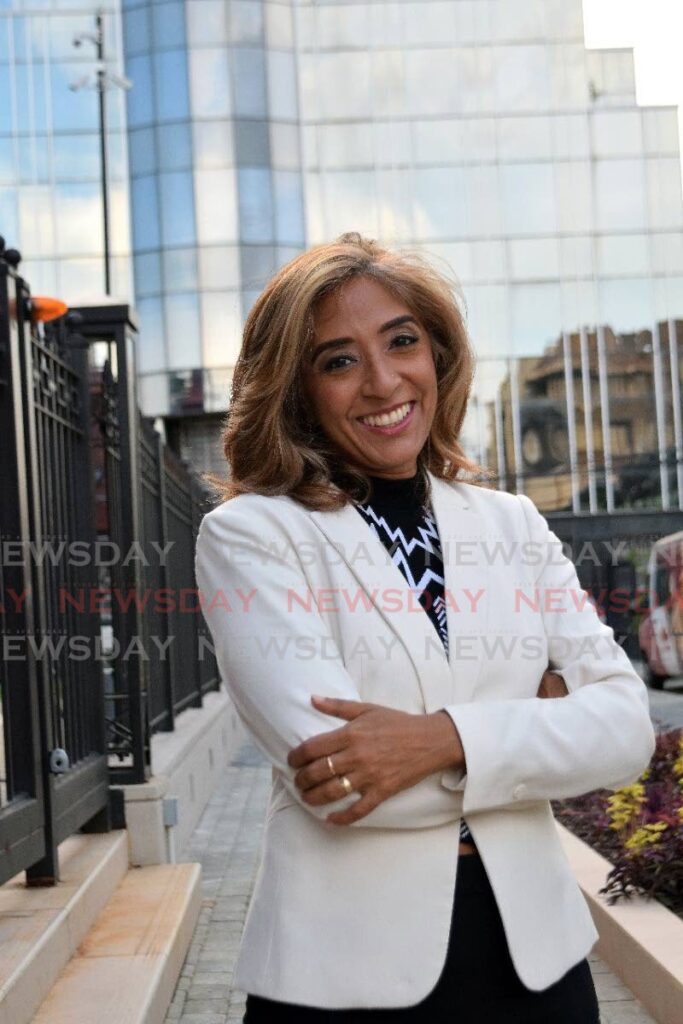Making Carnival inclusive

Dr Gabrielle Jamela Hosein
ROLL BACK to Dimanche Gras. In the years before the pandemic, I’d take Zi to see the final competition of Kings and Queens of Carnival to witness the absolute magic of seeing these giants dance in the wind as it came down from the Northern Range.
Not this year, because the competition started so late, it entirely worked against children attending. Did the National Carnival Commission think through who it wants to attend kings and queens finals? Maybe whole families would buy tickets and bring in revenue, but how many parents would have their child in the Grand Stand at 1 am on Carnival Sunday, four hours into a show?
We should identify those events which we want another generation to attend so they can see for themselves what the pinnacle of Carnival masquerade looks like, with its combination of art, construction, concept and performance. Surely, we want to create productions that an audience can stay awake long enough to see.
Instead, epic designs that children could have seen for themselves, as Zi actually did when she was younger, were now foreclosed by poor event planning leading to loss of tickets and loss of generational sharing. The poor grasp of the viewership which these costumes deserved was like watching how the State itself creates conditions for people to stop caring about culture or creativity.
On Carnival Monday morning, in bright 8 o'clock sun, J'Ouvert (Jouvay) band 3canal arrived at the stage in Port of Spain to find that towering scaffolding from the previous night’s Dimanche Gras was still firmly in place. The band’s truck could not cross the Savannah alongside its masqueraders, who also met barricades on the stage itself. After waiting three years, no one in the band – for the first time since I can remember – crossed the stage.
It was unthinkable that the one thing the NCC or someone couldn’t competently ensure is that masqueraders could cross the stage on a Carnival Monday. There was a kind of dismissiveness or maybe contempt which seemed added to disorganisation or ineptitude. It was as if the NCC didn’t know that people make real mas for J'Ouvert or perhaps only thought that pretty mas, mostly made in China, was worthy.
3canal does something beautiful which I have not seen anywhere else in the country. It brings mas, as those in the band take to the road in full-length costumes, masks, standards, headpieces, skirts, devil’s horns, wings and versions of traditional mas which are all individually and imaginatively made.
There are hundreds of such home- and hand-made pieces in an anarchy of artistic creativity which is hardly seen in such numbers on J'Ouvert, and is decreasingly part of the other two days of Carnival. Imagine, real mas, in the sense of hundreds of people who made their own costumes, turned away with such casual brutality.
On Carnival Tuesday, while waiting the hours one does to cross the stage, I had to climb over the iron fence to get into Memorial Park to rest on the grass. It’s well known that masqueraders rest in the park, and others, such as families, picnic in the shade. Yet, the gates were padlocked at two o'clock in the afternoon.
All the years so many sat there in their costumes, enjoying the grass and trees, meant nothing. Again, a dismissiveness of both precedent and ordinary folk, an unthinkable lack of consideration, and scenes of exclusion resulting from an inexplicable decision or perhaps sheer disorganisation. Thinking they deserved better, I watched all kinds of people squeeze through the space under the padlocks or also climb the rails.
There’s good to say about this year’s Carnival, but just these three examples highlight endemic lack of co-ordination and thought that should be taken seriously.
Finally, what makes Carnival a “success” to the State and its taxpayers should be spelled out beforehand so that a post-season audit can make sense. Over $100 million is at stake while schools and roads languish in disrepair.
The NCC should present a review mid-year between Carnivals showing how its assessment will revise its plans for the next year. Do we even know what state authorities over Carnival consider to have been successful and by what measures, and whether stakeholders agree?
It’s not just about how much money was spent, it’s whether it was well spent and whether we think both Carnival and our dollars are important enough to make improvements that create more inclusion, show respect and give better value for money.
Diary of a mothering worker
Entry 499
motheringworker@gmail.com


Comments
"Making Carnival inclusive"